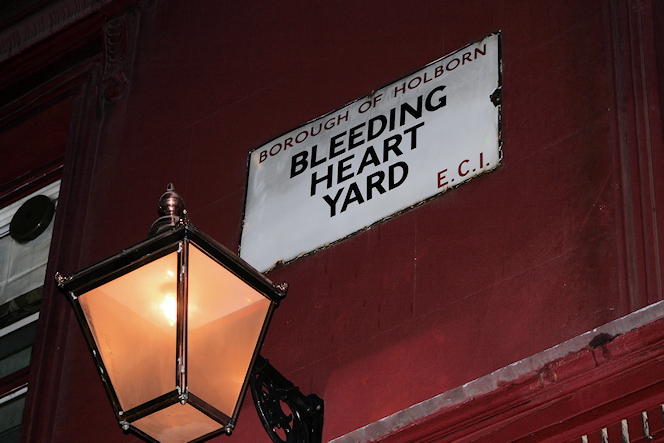Bleeding Heart Yard
Bleeding Heart Yard
Bleeding Heart Yard is a cul-de-sac leading off Greville Street, near Hatton Garden. The yard’s name has no connection with the flowering plants known as bleeding hearts and instead probably derives from an old inn sign, the Bleeding Heart of Our Lady, which depicted the heart of the Virgin Mary pierced through by swords. However, the sanguinary imagery has inspired several colourful legends, which Charles Dickens summarises in Little Dorrit (1855–7) – where he also suggests that the name actually relates to “the heraldic cognisance of the old family to whom the property had once belonged.”
One tale has it that a lovelorn young lady, imprisoned in her bedchamber by her cruel father, pined away at her window, murmuring ‘bleeding heart, bleeding heart, bleeding away’ as she expired. Dickens says that this story was “the invention of a tambour-worker, a spinster and romantic, still lodging in the Yard.”
The goriest fable suggests that sometime in the early 17th century the much-wooed Elizabeth Hatton was murdered here by the Spanish ambassador – whom she had jilted – and was found at dawn with her heart still pumping blood onto the cobblestones. Another angle on this story, this time featuring Sir Christopher and Lady Alice Hatton and the Devil, was set to verse by Richard Barham in his Ingoldsby Legends.
“Of poor Lady Hatton, it’s needless to say,
No traces have ever been found to this day,
Or the terrible dancer who whisk’d her away;
But out in the court-yard – and just in that part
Where the pump stands – lay bleeding a large human heart …”
Richard Barham, ‘The House-Warming!!’ (1840)


